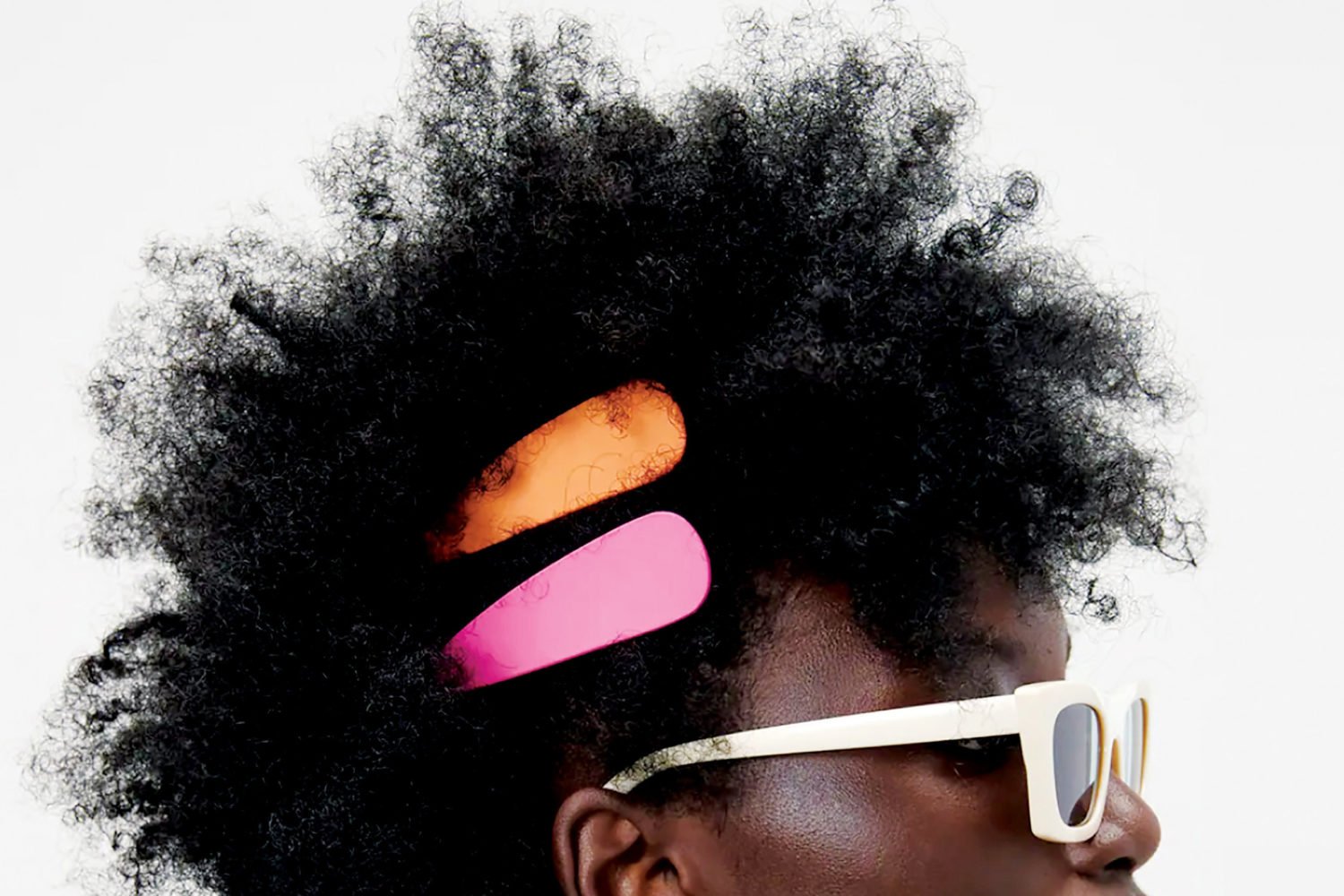Related >> Choosing a Cosmetic Dentist | 6 Tricks for Keeping Teeth White
On her 50th birthday, Nora Davison had something to smile about.
The Arlington resident had just completed eight months of cosmetic dentistry that straightened her front teeth, eliminated crowding, got rid of yellowing, and lengthened teeth that had been worn down. Davison, a physician assistant, had sought dental work after seeing old photos of herself and noticing changes in her teeth.
August Imholtz III, a 38-year-old lawyer who lives in DC’s Tenleytown, also noticed in photos that his front teeth had become crooked and his smile wasn’t as nice as it could be.
“It wasn’t that I was lacking in confidence beforehand,” Imholtz says, reflecting on his 18 months of cosmetic dental treatment. “But this does give me a more polished look. A good analogy would be the way you feel wearing your favorite shirt. You feel that way all of the time with your teeth being straight and white.”
We’ve come a long way from the days when having good teeth simply meant getting an annual checkup and cleaning and when any follow-up was devoted to filling cavities and pulling troublesome teeth.
These days, many patients want a Hollywood smile. A bright smile is perceived as a social asset and career booster, according to a survey commissioned by the American Academy of Cosmetic Dentistry. A separate AACD survey of 5,500 dental practices, conducted in 2007, placed the market for cosmetic procedures at $2.75 billion, a 15-percent increase over 2005.
According to dentists we spoke to, the recession has slowed the growth. “There aren’t as many people doing elective treatments,” says Alexandria dentist Charley Varipapa. “We’re doing smaller cases—people who are planning to get married or who just got a job.”
Still, Washington’s abundance of high-profile professionals suggests there will always be demand for aesthetic procedures.
What exactly makes for a great smile?
That’s easy, according to dentists we interviewed: a natural look.
“The optimum in cosmetic dentistry is for someone to say, ‘Wow, you’ve got a great smile,’ and for no one to know that’s not their original smile,” says Michael Pollowitz, a dentist in DC’s Spring Valley.
Among the most common challenges facing cosmetic dentists are teeth that are stained and worn, crooked and overlapping, misshapen and chipped, or with gaps between them. Dentists use a handful of methods to resolve such problems, and advances are being made all the time—in materials, techniques, and technology.
We interviewed more than a dozen area dentists about cosmetic dentistry. Here’s what they had to say about what’s working, what’s not, and what to consider before sitting down in a dental chair.
>> Next: Braces
BRACES: TREATMENT GETS FASTER AND LESS VISIBLE
Nora Davison’s and August Imholtz’s treatment began with braces.
“I went to the orthodontist with my daughter, who had an appointment, and I asked about my teeth,” Davison recalls. “That’s how I got into this.”
Davison was fitted with partial braces: eight on her upper teeth and eight on her lower—16 brackets total, compared with 28 for a full set. “It was a clear ceramic bracket with silver wires,” says McLean orthodontist Deirdre Maull, who treated Davison. “It’s really inconspicuous.”
From years of grinding, Davison’s top front teeth had been worn down and her gums had become lopsided. Braces repositioned her four front top teeth—called incisors—pushing them farther into her gum. The result was a gum line that was more symmetrical. Her teeth, meanwhile, remained too short, but that problem would be addressed later. Braces on her lower teeth alleviated crowding. All of this work was done in six months.
“I did not change Nora’s entire bite, only the alignment of her front teeth,” Maull says. “Since it was a partial treatment, there was less to do, which required less time.” Prosthodontist Benjamin O. Watkins III handled the rest of Davison’s treatment.
The hardest part of braces, Davison says, was cleaning her teeth after meals, because food often got caught in the brackets. “For someone who before had flossed every two months,” she says, “this was a new challenge.”
August Imholtz wore Invisalign—clear, removable aligners that contain no metal and are a popular choice for adults. Except when brushing, flossing, eating, and drinking, patients wear the aligners around the clock as they would braces.
“We’ve had patients on TV with Invisalign, and you can’t see the aligners,” says Andrew Orchin, an orthodontist whose practice in DC’s Friendship Heights specializes in treating adults.
Invisalign was a consideration for Davison, Maull says. But because more than straightening teeth was involved, braces—or “fixed appliances”—offered more control.
Imholtz’s aligners were fitted by his general dentist, Brian Gray, also of Friendship Heights. More dentists are handling simple orthodontic cases, especially those involving Invisalign. There is a bit of controversy surrounding this trend, says Orchin, but most orthodontists are okay with it as long as difficult cases are referred to specialists. Invisalign manufacturers provide a two-day course to certify dentists in its use. The course teaches Invisalign techniques but doesn’t teach the finer points of orthodontics, says Gray, an instructor.
To fit a patient with Invisalign, a dentist uses a material called polyvinyl siloxane to make molds of the teeth. It’s gooey when applied but hardens within minutes. The resulting impressions are sent to a lab where they’re used to make a 3-D computerized model of the teeth. From there, a series of aligners are produced. Each set is worn for two weeks before being replaced by the next in the series. With each successive set, the teeth are gradually straightened.
“The results have been tremendous,” says Imholtz, who wore Invisalign for 12 months, until April of 2009. He now wears a retainer at night—but not the head gear once so common.
“The biggest misconception with orthodontics is that when you’re done, you’re done,” Gray says. “The teeth are always moving.” Imholtz will need to wear some type of nighttime aligner for the rest of his life, says Gray, but the frequency of wear will be decreased over time.
The range of orthodontic options is considerable, with bulky hardware and rubber bands no longer the only choices—although bands are still used on occasion, mostly for children. One new technique is SureSmile, which boasts average treatment times of about a year. Wires that control and move the braces are the key.
Wires have always played a part in orthodontia; SureSmile wires are custom-made with the help of an oral scanner, a tool that resembles a wand and fits inside the mouth to take photos. The photos are translated into a three-dimensional image of a patient’s teeth and bite. A “robot” in a Dallas lab bends the arch wires into the dimensions assigned by the computer, and the wires are mailed to the dentist. This precision gives quicker and more accurate results than bending a wire manually and necessitates fewer follow-up visits.
“The great thing about the wire is that it’s heat-activated,” says Orchin, who started working with the product last year. “If I cool the wire down with ice or cold water, it becomes totally malleable. As soon as the wire is heated up in the patient’s mouth, it goes back to the shape the robot bent it into.”
Patients who experience discomfort following the placement of a new wire can get relief by sipping cold water and allowing the wire to soften.
The technology in SureSmile sounds promising to many, including Maull. Still, she’s waiting for the findings of independent researchers.
“I initially studied mechanical engineering, and I love gadgets,” Maull says. “But I don’t want to be beta-testing on my patients. People should not get too hung up on what type of bracket or gizmo an orthodontist uses. The important thing to remember is that all of these appliances are just tools. Nothing can substitute for good hands and sound judgment.”
Braces can leave white spots on teeth when they’re removed. A product called Icon is working wonders on these spots, called decalcifications, says John Drumm, a dentist in DC’s Foxhall neighborhood: “It gets into the nooks and crannies and seals up the tooth. It picks up the actual color of the tooth and remineralizes the tooth—and there’s no anesthesia necessary."
>> Next: Whitening
WHITENING: IN A DENTIST'S OFFICE OR AT HOME?
Teeth whitening, also known as brightening or bleaching, has increased by more than 300 percent since 1996, according to the AACD. The American Academy of Esthetic Dentistry describes whitening as one of the most requested dental procedures by patients of all ages.
There are two approaches: office systems, which often employ a light source, and home whitening kits, which include custom-fitted trays for upper and lower teeth. Both methods involve a whitening gel containing hydrogen peroxide or carbamide peroxide.
“Whitening involves breaking down the pigment in teeth and allowing them to turn white,” Gray says. “You’re doing it by introducing oxygen in the form of peroxide.”
Office treatments use the highest concentration of whitening agent—15 to 50 percent—while home systems tend to use 10 to 20 percent. The solutions can cause temporary gum and tooth sensitivity, but your dentist can provide a desensitizing agent.
Davison started her whitening with an office treatment that lasted about an hour. No light was involved.
“The light was gimmicky,” says Watkins, who has offices in DC and McLean. A study by Clinical Research Associates, dentistry’s version of Consumer Reports, endorses this view. The organization tested office systems by using a combination of whitening gel and light on 31 patients. Bleach alone was used on one side of the patients’ mouths while bleach with light was employed on the other. All teeth whitened, but no difference was noted in the two sides.
Most of the dentists we interviewed agreed with the findings. Some hypothesize that teeth seem brighter immediately following light-enhanced treatments because the light has a dehydrating effect. Once the teeth rehydrate, they remain whiter than before treatment, but the white is a more realistic shade.
Patients opting for office whitening generally have barriers applied to gums to protect them from the whitening gel. If a light source is involved, patients wear protective glasses.
Davison followed her office treatment with home whitening using custom-fitted trays and gel. Imholtz used home whitening exclusively. Rather than having special trays made, he used his Invisalign aligners, which were already custom-fitted. Imholtz continues to whiten once or twice a week.
Most of the dentists we surveyed say home and office techniques produce similar results. The difference comes down to time. Office whitening produces near-optimal results in one to three hours. Home whitening requires wearing mouth trays filled with gel for 30 to 60 minutes a day for about two weeks to achieve comparable results. Many dentists prescribe more home treatments because patients can attain great results for less money—often hundreds of dollars less.
Some, though, say office whitening remains popular. “We see much more in-office whitening,” says Sidney Markowitz, who has a practice in downtown DC. “It’s an immediate gratification. You usually get two or three shades lighter, and some people have gotten eight or nine shades lighter. It just depends on the individual and their enamel.”
Over-the-counter products such as Crest Whitestrips contain a lower concentration of peroxide than dentist-supervised treatments but can produce good results.
“If someone has mild staining and can put on Crest Whitestrips for a couple of weeks, they’re going to do fine,” Gray says.
Immediately following a whitening treatment, teeth are more porous due to the peroxide in the whitening gel. For 24 hours, you want to stay away from staining foods such as soy sauce and marinara, which could penetrate the pores.
Office whitening isn’t recommended for patients in their early teens or younger, Pollowitz says. The nerve canal in these patients is still developing—it’s wider and nearer to the surface—making teeth and nerves more susceptible to pain. Over-the-counter products are a safer choice.
>> Next: Veneers
A FRESH VENEER FOR DAMAGED TEETH
The most smile-altering procedure Nora Davison underwent may have been the veneers on her eight front top teeth.
Veneers—fabrications of tooth-colored materials such as porcelain—cover unsightly or damaged teeth.
Davison’s teeth had been worn down by years of grinding. “They were little squares,” she says. Front teeth are supposed to be rectangular and longer than they are wide. Veneers, the last step in Davison’s treatment, restored this look.
Davison’s veneers were crafted in a lab, based on molds of her teeth made by Watkins. But veneers can also be milled chair-side using technology known as CAD/CAM (computer-aided design/computer-aided manufacturing). Such devices are linked via software to a milling machine that’s able to generate, from a tiny block of strength-enhanced porcelain, veneers, crowns, and tooth-colored fillings. The process marries digital photos taken by an oral camera with computer software capable of designing restorations, and it produces near instantaneous results.
“Seven minutes,” says Stuart Ross, who uses CAD/CAM technology at his office in downtown DC. “The patient can sit there with a mirror and say, ‘I like that’ or ‘It’s too long.’ If they don’t like it, you can craft another.” An advantage is that veneers can be completed in a single office visit instead of two.
No matter the production method, before anything is permanently attached to a tooth, the porcelain must be matched to the shade of the patient’s enamel.
“Probably the hardest thing in dentistry is to do a crown or veneer on a single front tooth,” says Gray. “On the last visit, I’m going to want the patient here for an entire afternoon. I’m going to put them in various types of light—outside, in natural light, in a dark hallway, in fluorescent light. I need to make sure the veneer shade looks natural.”
Gray says a natural look can be attained through “characterization,” a process in which veneers are designed not only to incorporate different hues and levels of translucency—which real teeth exhibit—but to accommodate nicks or other small flaws.
Gray, Watkins, and other dentists who rely on labs provide patients with “temporary veneers” for a week or two until the permanent ones are crafted. These are plastic versions that are attached with a temporary adhesive. Patients can get a sense of how the new teeth feel and look and whether changes need to be made.
Veneers are subject to wear much as actual teeth are, and they have to be brushed and flossed. Their lifespan varies, but most last 15 years or more.
Davison can continue using home whitening—though veneers will neither lighten nor stain, Watkins says. He has advised Davison to wear a night guard to keep her from grinding her new dental work. Although porcelains used today are stronger than earlier versions, veneers, like actual teeth, can be damaged.
Some dentists advertise veneers as a substitute for braces. The contention is that by bonding a veneer onto a crooked tooth, the incongruity can be concealed. But a number of professionals find fault with this approach.
“Yes, instant orthodontics can happen with veneers,” says Watkins, “but patients need to understand the downside. Crooked teeth can require cutting down more of the natural tooth to attach the veneer. It’s going to require bonding the veneer onto the inner part of the tooth, called the dentin. The dentin is not nearly as reliable for bonding onto as the enamel,” or the outer part of a tooth. The more tooth structure a dentist has to cut away, the greater the risk of nerve problems and root damage.
Getting veneers is an irreversible procedure. Once a tooth is reduced to prepare it for the veneer, it can’t be restored.
Dentists debate how much preparation is required prior to attaching veneers, even when crooked teeth aren’t involved. Some veneers are advertised as being so thin that no preparation is required and no anesthetic is necessary. Many dentists argue that some tooth surface must be shaved off for a veneer to fit properly. Otherwise, they say, the veneer—no matter how thin—will jut beyond the surrounding teeth, forming a ledge at the gum line. Think of a press-on fingernail and the ridge that forms where it meets the cuticle.
Says Rockville dentist Patrick Murray: “The advantage of prepless veneers is that you don’t have to prep the teeth; the disadvantage of prepless veneers is that you don’t have to prep the teeth. If you have bulky margins or ledges, the gums will go nuts. They’ll either pull back away from the teeth or it will be a food trap, leading to decay."
>> Next: How to Fix a Misshapen Tooth and Bonding
FIXING A MISSHAPEN TOOTH
A quick and usually painless procedure that can make a difference in a person’s smile is enamel shaping. This involves contouring or removing part of the tooth enamel.
“Somebody may come in with really pointy canine teeth or maybe a couple of front teeth that are not the same length,” Drumm says. “As long as the enamel is really thick, I’ll say, ‘Let me just reshape that.’ I do it with a drill. It can make all the difference in the way the tooth looks.”
Enamel shaping—also known as enamoplasty—takes minutes, requires no anesthetic, and is inexpensive, says Markowitz. He considers the shape of a person’s face, mouth, and eyes before reshaping a tooth: “It’s a combination of mechanical skills and artistic talent.”
Imholtz underwent enamel shaping as part of his smile overhaul. Using a slow-speed drill with a sandpaper disk on the end, Gray shaved less than a quarter of a millimeter off of Imholtz’s four top front teeth as well as one eye tooth that was too pointy.
Was Imholtz nervous? “Not a bit,” he says. “I had a relationship with Dr. Gray as my dentist, so when he said he was going to shave a tooth a bit, it didn’t occur to me not to do it. I trusted him completely.”
Enamel shaping does mean changing a tooth permanently. Once enamel has been removed, it’s gone for good.
BONDING: AN EASY WAY TO HIDE A DISCOLORED TOOTH
Bonding is a procedure that can improve the appearance of teeth that are chipped or stained or that have spaces between them. Tooth-colored materials are applied—or bonded—to the surface of a tooth.
Drumm has used bonding to repair a front tooth that’s discolored. “I can put two or three shades of resin on your tooth and have more control over the color and end result,” he says. “The problem is that it’s a filling material, so it’s going to wear out and chip more easily than porcelain, and it will stain more easily. Its life expectancy is five to seven years.”
Yet sometimes bonding can address a problem better than a veneer can. “Materials today are more durable, with better finishes,” says Gray, who used bonding in Imholtz’s case.
Generally, bonding requires no tooth preparation or anesthesia, and it’s much less expensive than veneers. You want to be sure the end result gives you a tooth with luster and translucency—accomplished through layering the resins.
LIFE AFTER TREATMENT
Nora Davison says her months of cosmetic treatments taught her all sorts of things about teeth.
August Imholtz remains impressed by the treatment’s precision and its ability to transform his smile—even though it required spending two-to-three-hour stints in the dental chair with a bite block wedged between his cheeks.
“Probably the biggest challenge to all of this was the time and patience it required,” he says. “It didn’t hurt at all.”
Both Imholtz and Davison say they’re pleased with their outcomes and that friends and family have complimented them on their new smiles.
“I know I won’t be able to stop looking in the mirror,” Davison confesses.
Imholtz’s wife has begun cosmetic procedures with Gray.
“I think she saw me and it motivated her,” he says, flashing a bright, white, natural-looking smile.
This article first appeared in the December 2010 issue of The Washingtonian.
















